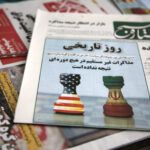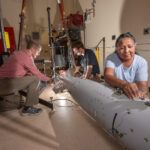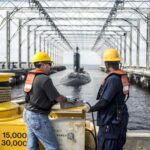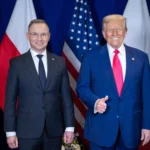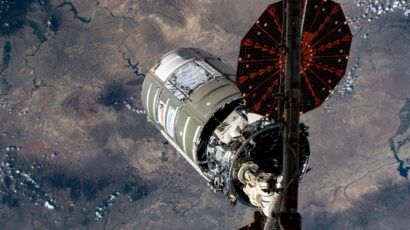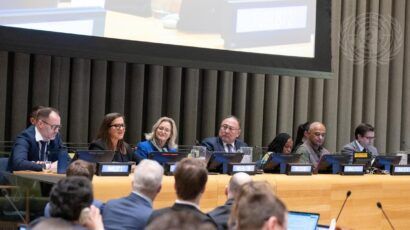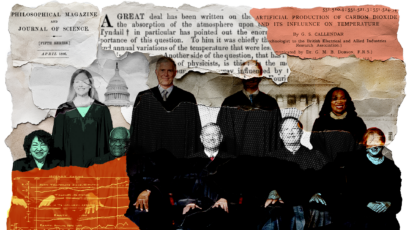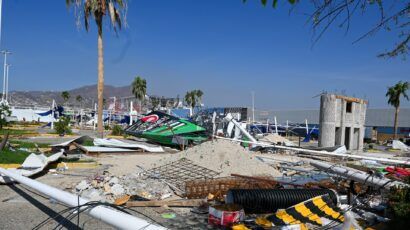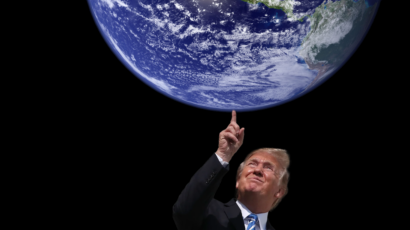Trump wants denuclearization and a ‘Golden Dome.’ He can’t have both
By Celia McDowall, Ankit Panda | April 29, 2025
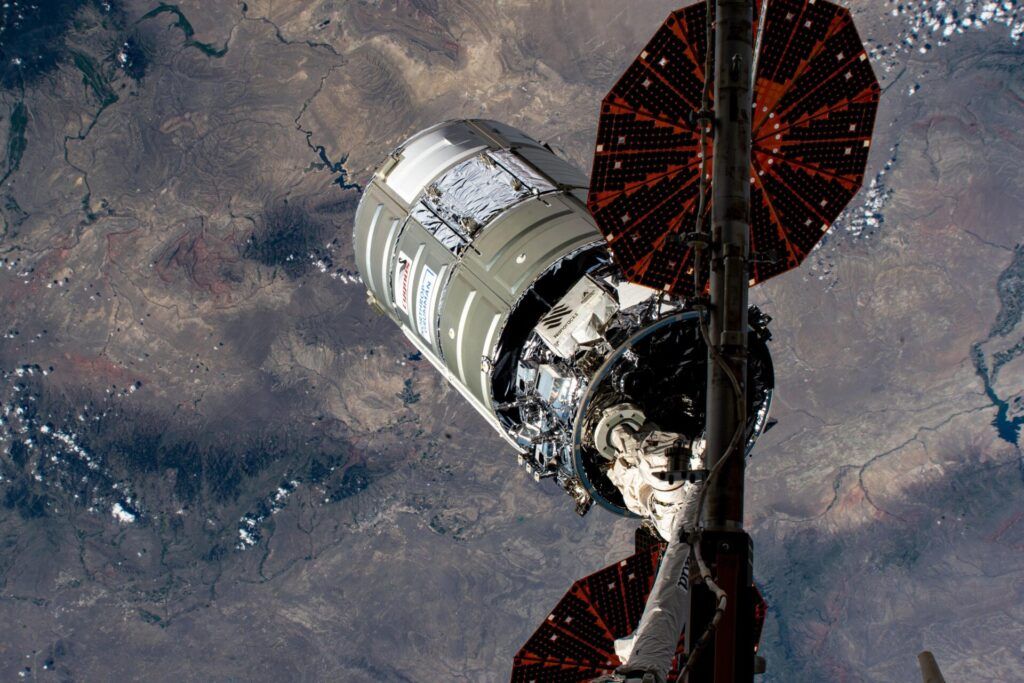 Trump's Golden Dome integrated air and missile defense architecture would include an expansive list of new capabilities, including hypersonic and ballistic tracking space sensors, space-based interceptors, and other intercept capabilities postured to defeat an attack on US population centers. (Credit: NASA photo)
Trump's Golden Dome integrated air and missile defense architecture would include an expansive list of new capabilities, including hypersonic and ballistic tracking space sensors, space-based interceptors, and other intercept capabilities postured to defeat an attack on US population centers. (Credit: NASA photo)
US Defense Secretary Pete Hegseth will soon report back to the White House with options for what the second Trump administration has dubbed a “Golden Dome” approach to homeland missile defense. The administration seeks an expansive system for defending the United States from missile attacks, which is a stark departure from existing policy. The Pentagon’s review of options is meant to consider the implications of a massive expansion of missile defenses for strategic stability.
But the fundamental vision of a “Golden Dome” may be incompatible with any conception of stability among the major nuclear powers.
President Donald Trump has long spoken of the well-known Israeli Iron Dome system as something of a model for the United States. Trump’s executive order, which kicked off the Golden Dome review effort in January, states that the United States does not seek to replicate the Iron Dome—a short-range missile defense system best optimized for Israel’s particular security predicament. Instead, the Trump administration seeks to broadly render the continental United States immune to missile attacks from any source by developing a layered, integrated architecture capable of detecting and targeting incoming threats across all flight profiles.
While seeking more and better missile defenses may seem harmless in principle and perhaps even desirable to Americans concerned about homeland security, Trump’s Golden Dome is likely to provide kindling for an arms race that will inevitably clash with his stated desire for “denuclearization.” The president, ultimately, cannot work toward a world with fewer nuclear weapons while brazenly expanding homeland missile defenses. He will need to choose.
Golden Dome’s rationale. The Trump administration states that growing threats posed to the United States by advanced adversary missile capabilities require an ambitious shift in US policy. According to proponents of a more comprehensive homeland missile defense architecture, the ability of Russian, Chinese, and North Korean missiles to circumvent or saturate current US defenses requires a reconceptualization of the missile defense architecture.
After the Cold War, the United States established limited defense against attacks from so-called “rogue states,” notably North Korea and Iran; that approach has explicitly excluded seeking a comprehensive defense against Russia and China. Given their large nuclear arsenals, the United States has relied on deterrence to defend against an attack by these adversaries—a posture adopted by both the Biden and the first Trump administrations. No US administration—not even the Reagan administration, famous for its “Star Wars” missile defense dream—ever framed missile defense aspirations in the expansive way suggested by Trump’s Golden Dome order, which seeks to deter and defend against “any foreign aerial attack on the Homeland.”
Strategic implications. For decades, the broad aspirations behind US missile defense have remained constant at the margins precisely because of the long-recognized importance of the condition of mutual vulnerability among nuclear peers. In the new multipolar nuclear environment—in which China continues to expand its nuclear arsenal and nuclear saber-rattling from Russia is commonplace—it seems particularly unwise to dramatically jolt the strategic balance with a massive missile defense program.
Nuclear deterrence between countries with roughly comparable capabilities is most stable under two conditions: First, each must possess nuclear arsenals that are survivable enough to maintain an assured ability to inflict unacceptable damage even after a nuclear attack. Second, their adversaries must understand that such a condition prevails—and that attempting to escape this condition of mutual vulnerability will be futile.
The Trump administration’s Golden Dome plans would—intentionally or not—negate these two principles, which generations of US nuclear strategists have broadly acknowledged as conducive to stability. By projecting the vision of a comprehensive homeland missile defense, the administration stirs longstanding fears in Russia and China that the United States does not seek stability but instead seeks to escape vulnerability altogether through expansive investments in missile defense technologies.
While Moscow and Beijing have taken steps to change the composition of their arsenals, the case that the United States needs to keep pace—either with more nuclear weapons or new missile defenses—should not be uncritically accepted. If the history of the nuclear age tells us anything, it is that adversaries will seek ways of bypassing or counteracting whatever new capabilities the United States deploys. With Russia and China, an arms race will likely include acquisition of more capable missiles that can bypass advanced US missile defenses. An arms race will also almost certainly mean more missiles and more decoys to overwhelm the new US missile defenses. And if all this fails, Russia and China could still deploy new delivery systems, such as underwater autonomous nuclear torpedoes of the kind Russia is already building.
Seeing a mirage. The Golden Dome initiative arrives less than a year before the expiration of New START, the last remaining major bilateral nuclear arms control agreement between Washington and Moscow. Since 2010, this treaty has limited the Russian and US nuclear arsenals, discouraging arms racing. As New START comes to an end, the consequences of jolting strategic stability with an ambitious new missile defense initiative are likely to be extremely serious.
Upon entering office, President Trump quickly expressed an optimistic preference for trilateral nuclear arms reduction and cost-cutting in defense spending. Trump’s inclination for what he has called “denuclearization” has been reiterated several times since January. He recently referred to nuclear weapons as “big monsters” and asserted that “[i]t would be great if we could all denuclearize.” Referring to Russia and China, Trump said, “there’s no reason for us to be spending almost $1 trillion on military, there’s no reason for you to be spending $400 billion.” Whether these statements will come to arms control or reductions in military spending remains to be seen, but if seen through, Golden Dome will make anything resembling success in this area a mirage.
Trump’s Golden Dome is fundamentally incongruent with the president’s inclination for denuclearization. Not only will massive new missile defense investments—absent a theory of strategic stability accompanying them—largely eclipse cost reduction initiatives elsewhere, but the arms race it risks setting off further clashes with Trump’s desire for a world free of nuclear weapons.
A comprehensive homeland missile defense would risk upsetting strategic nuclear stability. It would also encourage arms racing and mark the onset of a vicious, self-reinforcing action-reaction cycle. To mitigate the worst possible consequences of a new arms race between the United States, Russia, and now China, US lawmakers should be ready to question and exercise oversight over the new administration’s missile defense aspirations as they crystallize in the following weeks and months. Failure to keep the Trump administration’s missile defense plans in check risks taking the United States down an expensive road that goes nowhere but increases the risk of nuclear war.
Together, we make the world safer.
The Bulletin elevates expert voices above the noise. But as an independent nonprofit organization, our operations depend on the support of readers like you. Help us continue to deliver quality journalism that holds leaders accountable. Your support of our work at any level is important. In return, we promise our coverage will be understandable, influential, vigilant, solution-oriented, and fair-minded. Together we can make a difference.
Keywords: China, Donald Trump, Golden Dome, Iron Dome, Russia, Trump administration, United States, arms control, arms race, denuclearization, missile defense, strategic stability
Topics: Nuclear Weapons





